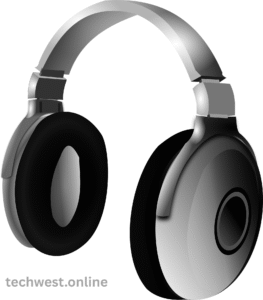Introduction to Quiet Technologies
Quiet technologies involve innovative technologies that aim to reduce noise pollution, improve efficiency, and provide quiet operations in all industries. From electric cars (EVs) that move quietly on city roads to sophisticated noise-cancellation technology in consumer devices, quiet technologies tackle the serious problem of noise pollution in a rapidly urbanizing world. Noise pollution, associated with health complications such as stress and hearing loss, impacts millions of people worldwide, and quiet technologies become a pressing priority for innovation. This article explores the applications, advantages, disadvantages, and the future of quiet technologies, tailored to the keyword “quiet technologies” for increased search engine rankings and sharing quality information with the audience.

Understanding Quiet Technologies
Quiet technologies are systems, materials, and devices designed to minimize or remove unwanted sound without sacrificing performance and functionality. They utilize breakthroughs in acoustics, materials science, and engineering to produce quieter products and environments. Some examples are silent electric motors, active noise cancellation (ANC) systems, and sound-absorbing materials in construction. By minimizing noise, these technologies enhance quality of life, promote environmental sustainability, and align with international efforts to fight noise pollution, which is a rising issue underscored by the World Health Organization (WHO).
The phrase “quiet technologies” is an extremely applicable search term for users looking into noise reduction technologies, sustainable innovations, or innovation in sectors such as motor vehicles, electronics, and construction. Writing for this term can appeal to professionals, buyers, and regulators looking for pragmatic means of developing quieter, healthier environments.
Applications of Quiet Technologies
1. Automotive Sector
Silent technologies are revolutionizing transport, especially in electric and hybrid cars. Electric vehicles, including those of Tesla, Rivian, and Lucid, make very little noise compared to conventional combustion engines, drastically cutting down city noise pollution. Tire companies like Michelin and Bridgestone also design low-noise tires with precision-engineered tread patterns to further reduce road noise. Content for “quiet technologies in electric vehicles” can appeal to environmentally aware motorists and car enthusiasts.
2. Consumer Electronics
Noise-canceling headphones like Bose QuietComfort and Sony WH-1000XM5 are the epitome of quiet technologies in consumer electronics. The headphones employ microphones and software to produce counteracting sound waves, which eliminate background noise. Silent motors in home appliances like air conditioners, washing machines, and refrigerators also lower household noise levels. Product reviews or comparisons within content can increase engagement for queries like “best quiet technologies for home use.”
3. Construction and Architecture
Quiet technologies in construction are fundamental acoustic insulation materials such as mass-loaded vinyl, soundproof drywall, and double-glazed windows. The technologies reduce noise transmission in residential, commercial, and educational buildings to quiet spaces. Green building certifications, for instance, LEED and BREEAM, adopt quiet technologies to enhance occupant comfort. Materials on “quiet technologies in sustainable architecture” can attract architects, builders, and property developers.
4. Industrial and Manufacturing
The use of quiet technologies in factories minimizes the noise of machinery, safeguarding workers’ hearing and enhancing productivity. Light compressors, vibration dampeners, and sound enclosures reduce noise levels from heavy machinery. Siemens uses quiet technologies in its industrial motors for satisfying workplace safety standards. Using keywords such as “quiet technologies for industrial noise control” can attract manufacturing professionals.
5. Aerospace and Aviation
Quiet technologies are critical in aviation to reduce aircraft noise, benefiting both passengers and communities near airports. NASA’s X-59 QueSST aims to make supersonic flights quieter by reducing sonic booms. Similarly, drone manufacturers like DJI incorporate noise-reducing propellers for urban applications. Content on “quiet technologies in aviation” can attract aerospace professionals and technology enthusiasts.
Benefits of Quiet Technologies
1. Health and Well-Being
Noise pollution is a cause of stress, sleeping disorders, and cardiovascular conditions, according to the WHO, which also estimates that noise has significant worldwide health burdens. Quiet technologies counteract these risks by making surroundings quieter. For example, noise-canceling headphones enhance concentration in loud places, while silent EVs lower urban stress. Incorporating health figures may help make content more credible and SEO-efficient.
2. Environmental Sustainability
Quiet technologies tend to be green-friendly. EVs decrease noise and carbon emissions, enabling cleaner cities. Quiet wind turbines with aerodynamic blades reduce noise and produce renewable power. Content highlighting “quiet technologies for sustainability” can appeal to environmentally aware readers and policymakers.
3. Improved User Experience
Quiet technologies provide relaxed, distraction-free spaces, and users rate them higher for satisfaction. Silent appliances make home living better, and quiet office environments increase productivity. Adding user feedback or case studies can render content more attractive to searchers.
4. Compliance with Regulations
Most jurisdictions impose stringent noise controls, particularly in cities and around airports. Quiet technologies enable industries to conform, reducing fines and enhancing community image. Copy relating to “quiet technologies for noise compliance” can draw industry looking for regulatory answers.
5. Cost Savings
Quiet technologies will lower costs by reducing wear and tear from machinery vibrations. Quicker machinery, for instance, undergoes less mechanical stress, leading to longer equipment life. Focusing on cost savings will attract budget-minded readers looking for targeted solutions.
Challenges of Quiet Technologies
Quiet technologies, however, have some challenges that will need to be addressed in content:
-
High Development Costs: Next-generation materials and ANC systems are costly. Maintenance and operation can get to talk about long-term savings to counteract upfront expenses.
-
Technical Sophistication: Quieting systems requires advanced engineering, potentially constraining scalability. Focusing on successful deployments can establish credibility.
-
Limited Knowledge: Most consumers and businesses do not know of the advantages of quiet technologies. “What are quiet technologies” educational content can fill this knowledge gap.
-
Performance Sacrifices: Under certain circumstances, noise suppression could negatively affect power output, as with high-performance equipment. Content must explain how contemporary designs optimize silence and efficiency.
Sample Content Structure for Quiet Technologies
Section 1: Introduction
-
Define quiet technologies and their application against noise pollution.
-
Describe their applicability in urbanized, technology-based societies.
-
Keyword: “quiet technologies for modern living.”
Section 2: Applications
-
Automotive: Silent electric vehicles and low-noise tires.
-
Electronics: Active noise-cancelling headphones and quiet electronics.
-
Construction: Soundproof materials and acoustic constructions.
-
Industrial: Low-noise equipment and enclosures.
-
Aviation: Quiet jet engines and quiet drones.
Visual: Infographic demonstrating applications across industries.
Section 3: Benefits
-
Health, sustainability, user experience, compliance, and cost savings.
Visual: Chart contrasting noise levels with and without quiet technologies.
Section 4: Challenges
-
Costs, complexity, awareness, and performance trade-offs.
Visual: Timeline of quiet technology breakthroughs.
Section 5: Future Outlook
-
Emerging trends such as AI-controlled noise and quiet renewable energy systems.
Visual: Graph estimating market growth for quiet technologies.
Section 6: Conclusion
-
Summarize the impact of quiet technologies.
CTA: “Explore quiet technologies for a quieter, sustainable future.”
Future of Quiet Technologies
The silent technologies industry will expand considerably, fueled by urbanization, pollution controls, and technological innovation. AI-based noise cancellation, reduced-noise renewable energy systems, and superior acoustic materials will define the future. For instance, smart cities could incorporate sound-absorbing infrastructure, while advanced ANC systems of the next generation will become ubiquitous in public areas. The global noise control market, including quiet technologies, is projected to reach billions by 2030. Content highlighting these trends can attract readers searching for “future of quiet technologies.”
Conclusion
Quiet technologies are redefining how we interact with our environment by reducing noise pollution, enhancing sustainability, and improving quality of life. From silent EVs to noise-canceling electronics and soundproof buildings, these innovations address critical challenges in modern society. By optimizing content for “quiet technologies,” businesses and educators can reach audiences seeking effective noise reduction solutions. As technology advances, quiet technologies will continue to pioneer a quieter, healthier, and more sustainable world, making them a vital focus for innovation and investment.
